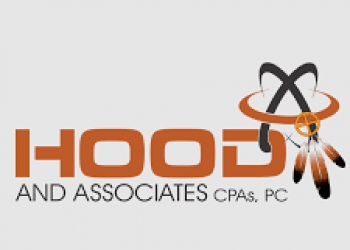News
State of Oklahoma
Posted: Jan 12, 2021 6:00 AMUpdated: Jan 12, 2021 6:01 AM
PPP2 Changes Explained by Paul Hood

Tom Davis
Congress revived the PPP as part of the $900 billion COVID-19 relief bill that was signed into law on Dec. 27. The program provided $525 billion in forgivable loans over five months before it stopped accepting applications in August. The Economic Aid Act rebooted PPP (or PPP2, as some call it) with many of the same parameters as the first program but also several important differences from the original PPP.
Appearing on COMMUNITY CONNECTION on Tuesday, Paul Hood with Hood and Associates CPA's, provided an overview and some changes included in PPP2.
LISTEN TO THE PODCAST:
One of the biggest changes is making PPP funding available to businesses that previously received a PPP loan. Business are eligible for a second PPP loan of up to $2 million, provided they have 300 or fewer employees, have used or will use the full amount of their first PPP loan, and can show a 25% gross revenue decline in any 2020 quarter compared with the same quarter in 2019.
Fresh PPP loans also are available to first-time borrowers from the following groups:
- Businesses with 500 or fewer employees that are eligible for other SBA 7(a) loans.
- Sole proprietors, independent contractors, and eligible self-employed individuals.
- Not-for-profits, including churches.
- Accommodation and food services operations (those with North American Industry Classification System (NAICS) codes starting with 72) with fewer than 300 employees per physical location.
- The legislation also allows borrowers that returned all or part of a previous PPP loan to reapply for the maximum amount available to them.
PPP loan terms:
As with PPP1, the costs eligible for loan forgiveness in PPP2 include payroll, rent, covered mortgage interest, and utilities. PPP2 also makes the following potentially forgivable:
- Covered worker protection and facility modification expenditures, including personal protective equipment, to comply with COVID-19 federal health and safety guidelines.
- Expenditures to suppliers that are essential at the time of purchase to the recipient’s current operations.
- Covered operating costs such as software and cloud computing services and accounting needs.
- To be eligible for full loan forgiveness, PPP borrowers will have to spend no less than 60% of the funds on payroll over a covered period of either eight or 24 weeks — the same parameters PPP1 had when it stopped accepting applications in August.
PPP borrowers may receive a loan amount of up to 2.5 times their average monthly payroll costs in the year prior to the loan or the calendar year, the same as with PPP1, but the maximum loan amount has been cut from $10 million in the first round to the previously mentioned $2 million maximum. PPP borrowers with NAICS codes starting with 72 (hotels and restaurants) can get up to 3.5 times their average monthly payroll costs, again subject to a $2 million maximum.
Simplified application and other terms of note
The new COVID-19 relief bill also:
- Creates a simplified forgiveness application process for loans of $150,000 or less. Specifically, a borrower shall receive forgiveness if the borrower signs and submits to the lender a certification that is not more than one page in length, includes a description of the number of employees the borrower was able to retain because of the loan, the estimated total amount of the loan spent on payroll costs, and the total loan amount. The SBA must create the simplified application form within 24 days of the bill’s enactment and may not require additional materials unless necessary to substantiate revenue loss requirements or satisfy relevant statutory or regulatory requirements. Borrowers are required to retain relevant records related to employment for four years and other records for three years, as the SBA may review and audit these loans to check for fraud.
- Repeals the requirement that PPP borrowers deduct the amount of any Economic Injury Disaster Loan advance from their PPP forgiveness amount.
- Includes set-asides to support first- and second-time PPP borrowers with 10 or fewer employees, first-time PPP borrowers that have recently been made eligible, and for loans made by community lenders.
« Back to News

